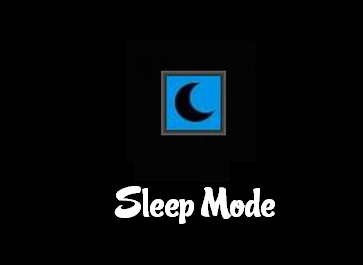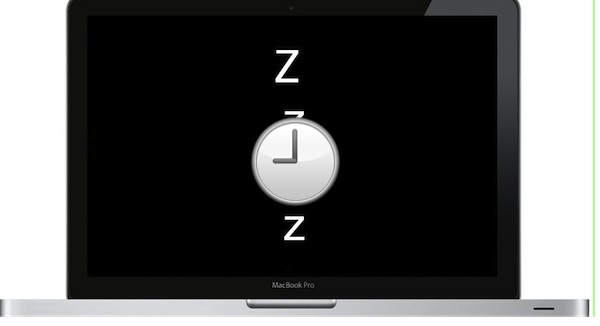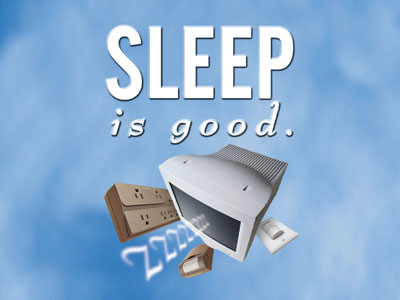Sleep mode
The standby mode or standby mode ( also wait mode ), the state of a technical device, in which the actual utility function is temporarily disabled, but can be reactivated at any time and without any preparation or long waiting times. For maintaining the standby state in the control case, a specific, compared to the normal mode of reduced power consumption is required. Examples with standby mode include devices in the field of consumer electronics such as televisions, DVD players and personal computers.
Since the introduction of the EU's Ecodesign Directive, which was adopted in 2008 and 2010 came into force, the power requirement is limited in standby mode. So should not take more than 0.5 Watt devices. If these devices fulfill besides the pure standby function additional functions, eg Show the current time, then they may take 1 watt.
General
In the field of consumer electronics for operation is often initiated by turning off a device by remote control ( standby or standby button ). During standby, the device may at any time be re-activated by remote control without the need for direct intervention on the device is necessary, which is considered comfortable. However, because of the need to have at least the circuit for processing the remote control signals is activated, the device is in standby mode continues to consume electrical energy.
It is in the standby mode, requiring only a small amount of power compared to full use. The annual consumption of standbys can still exceed the operation. For example, if a video recorder in operation 25 W receives and 400 hours used in the year, it is clear that for the operation of 10 kWh. Does he need in standby mode only 4 W, then this power summed at 8360 hours a year on standby around 33 kWh.
To save energy, various devices have a feature for automatic partial shutdown, such as a reduced brightness of LCD screens during periods of inactivity. Thus, the standby mode is not intended to replace the complete off, but help to reduce the power consumption of devices in use of free time.
Power Supplies
Many devices are powered by separate power supply units. The use of such power supplies have among other benefits, so that the supplied devices need not be designed for all worldwide power grids. Such pluggable power supplies can generally not be turned off, devices connected to it remain in the connected state may at standby mode.
When turning by means of a primary-side power switch on the unit with integrated power supply, the power is reduced to 0 W. For some devices, the power switch is on the secondary side of the power supply, so actually "behind" the power supply. This has the advantage that can be carried out more cost-effective due to the lower voltage of the switch and the electrical insulation, since no direct line voltage is switched. The disadvantage is that the power supply always remains in operation.
Computer
Wherein computers in stand-by mode a large part of the internal electronics are turned off quickly, but can be activated again to allow an immediate possible to continue working. For example, reducing the clock frequency or a so-called sleep mode for the processor and the disconnection of hard drives are common and are among the stand-by mode.
This standby modes can be used by avoiding a time-consuming reboot to save energy. However, the computer is not turned off completely, and further consumes power, typically from 2 % to 10 % of the normal consumption. Therefore, in long periods of nonuse a perfect shutdown is better suited to save energy. When personal computers usually have different standby modes or states are available with different extensive part shutdowns, or down-regulation of different numbers of devices. The technical implementation is usually done via the Advanced Configuration and Power Interface ( ACPI), through which the standby state "S1 " to " S3" are callable.
The so-called " suspend to RAM" (English, also called " suspend to memory" ) the current system configuration to be loaded into memory and shut down most of the system components. Only the memory (RAM) is still powered by the standby line for the ATX power supply with power, otherwise the stored data would be lost. The PC acts externally now almost as if he was completely turned off, usually a control light is only turned on, blinks slowly or changes color. Once the user is using an input device, so for example, operates the keyboard (in some cases reaches the mouse ), the computer is brought back to the operating mode, and after a few seconds, the user can continue working.
More widely defined as a standby mode is the idle state ( " suspend to disk " ACPI state "S4" ), in which the device must no longer remain in operation because the operating condition is obtained in non-volatile memories. Thus, in the resting state, no energy is consumed, both the displacement in the idle state ( " sleep " ) and the reactivation ( " waking up " ) longer than the standby mode ..
Measurement
Commercial electronic electricity meters are measured at powers of less than 2 W often inaccurate, measurement error over 10 % are not uncommon. In addition, only the proportion of the active power and not the complete apparent power must be recorded in the measurement by the meter. In addition to effective values (RMS ) can be measured, which is essential in particular for consumers with non-sinusoidal current waveform and in different form factors.
Reduction
The power consumption can be reduced by circuit technology, standby services in the two -digit milliwatt range are possible with moderate additional costs for power supplies with less than 5W. The user can, as a rule waiving the standby power like turning on with the remote control, disconnect the load from the mains voltage. This can be done by primary power switch on the front, there is the problem that the user is not always clear whether the power switch is mounted on the primary side. Other simple methods are staking of the relevant device or the use of a switchable power strip or a master - slave socket.
Next, there is the possibility of remote-controlled outlets or switches to use, but which have a standby mode for themselves.
However, functional reasons, require a range of equipment and facilities an uninterrupted power supply and are normally in continuous standby mode. These include, for example, telephone systems, alarm systems, measuring devices and remote control facilities, but also mains powered clocks.









